If you own a generator, chances are you know the golden rule: don’t ever let it get wet!
Rainy weather can cause serious damage to the generator’s components and cause it to break down.
Is a wet generator dangerous in other ways?
If your generator gets wet, it can be a danger to you or others around you. This is because it poses a shock or electrocution risk.
If you want to use your generator in the rain, you’ll have to ensure you keep it – and yourself – safe. Here’s everything you need to know about using a generator on rainy days, because sometimes you can’t help the fact that you need power.
How To Run A Generator In The Rain
If you want to use your generator in the rain, such as if you’re stuck somewhere outdoors and need a steady supply of power, there are some ways in which you can do so safely.
Invest In A Steel Enclosure
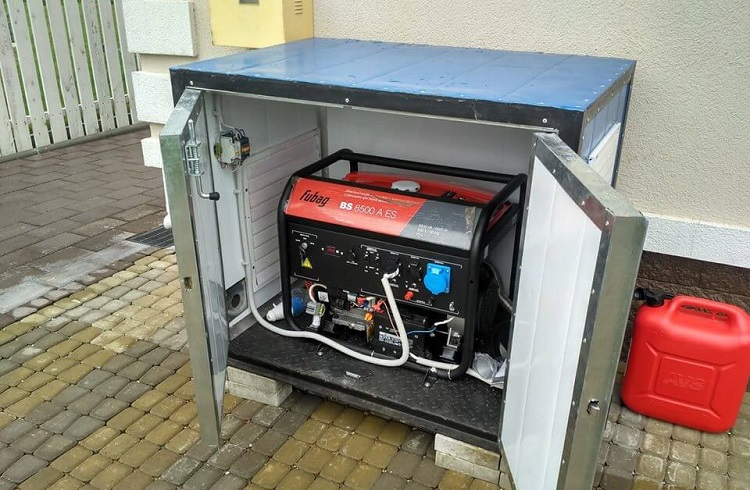
A steel enclosure will protect your generator from the water while providing enough ventilation so that the generator can run safely.
When finding an enclosure for your generator, it’s important to bear in mind that the generator needs ventilation – air needs to enter the piston and create combustion and air needs to be released from the exhaust out of the enclosure so that it doesn’t pollute the air that enters the engine.
If your generator isn’t properly ventilated, it could become too hot and it could stop working in the way it should.
Buy Or Build A Plastic Shed
You can use a plastic shed for your generator, but ensure that it’s big enough so that there’s a good amount of space all around the generator.
Check the plastic of the shed regularly to ensure that the running generator isn’t heating it up as that could cause the plastic to melt.
You should also add some vents in the plastic shed so that air circulation is encouraged.
Generator Canopy
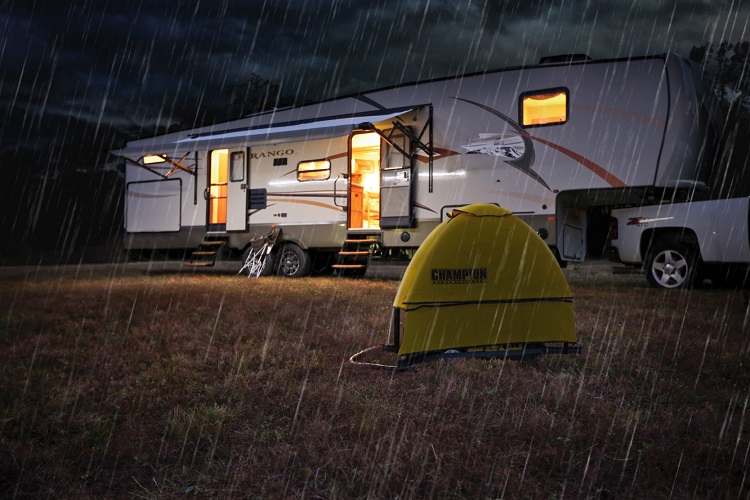
A canopy for your generator is ideal to keep it protected. You have many options available when shopping for a canopy. You might be able to source a cover that’s been designed for your generator model, or you can buy one that’s more universal.
Whatever canopy you choose, ensure that it provides enough space around the generator. This will prevent the generator from getting wet while also ensuring there’s enough air circulation.
Note that a general canopy is only useful in instances when the rain is slow and falling straight down, not from the sides. If you’re dealing with wind-blown rain, you need to give your generator more protection. You can find canopies specifically made for generators that are waterproof and are made out of tarp. Some have a convenient suspended flap design.
An example is IGAN Generator Tent Running Cover that has flaps which can be hung on the top metal ring of its enclosure. You can keep some flaps open or drop them all so that the generator is properly protected.
What About The Ground On Which The Generator Rests?
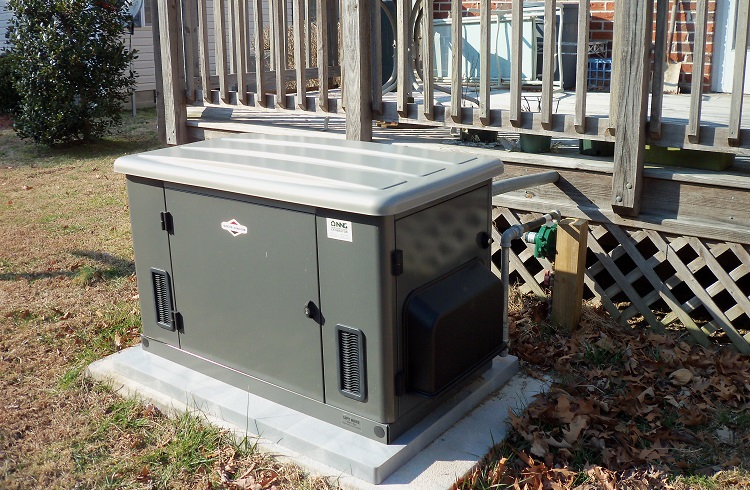
During rainy weather the ground might be wet, so you will need to ensure that you provide a barrier between the damp ground and the generator.
Your generator should always rest on a dry, flat surface, so a flat piece of plywood is often a good way to achieve that.
Many generator manufacturers advise less than 15 degrees of surface change in all directions underneath the generator, so that’s important to bear in mind.
Can You Run A Generator From Inside A Garage With The Door Open?
If you’re at home when you need to run a generator while it’s raining, you might think it’s safe to do so from inside an open garage.
That way, there’ll be enough ventilation and your generator will be shielded by the walls and roof of the garage. But this is a bad idea!
Carbon monoxide that’s released by the generator can build up and enter the house through cracks around the doors if your garage is attached to your home.
When the wind blows into the garage via the open door, it can push the carbon monoxide gas further inside the living space. This is why it’s essential to never run a generator inside a garage or in any spot where it’s close to windows and doors.
For safety reasons, always ensure you run your generator at least 20 feet away from your home.
Related Questions
Can you make an enclosure out of wood for your generator?
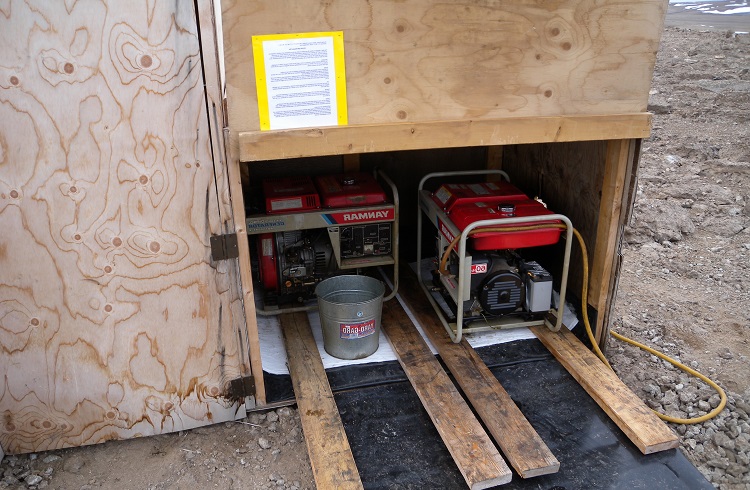
Making a wood enclosure for your generator to operate in the rain isn’t advisable. The heat could burn the wood, especially if the generator produces sparks.
What’s the danger of touching a generator with wet hands?
This is very dangerous as it can electrocute you! You should never touch a generator if your hands are wet.
Conclusion
Can a generator run in the rain?
While you should never let your generator get wet, such as on a rainy day, you can still use it. You just have to ensure that it’s properly sheltered from the elements on all sides and that it’s resting on a dry, flat surface.
In this article, we’ve provided some useful tips on how to protect your generator so it can keep running no matter what weather conditions are thrown at it.
We’ve also looked at different types of shelters and enclosures for your generator to ensure that it doesn’t get ruined by the rain.
Sources:

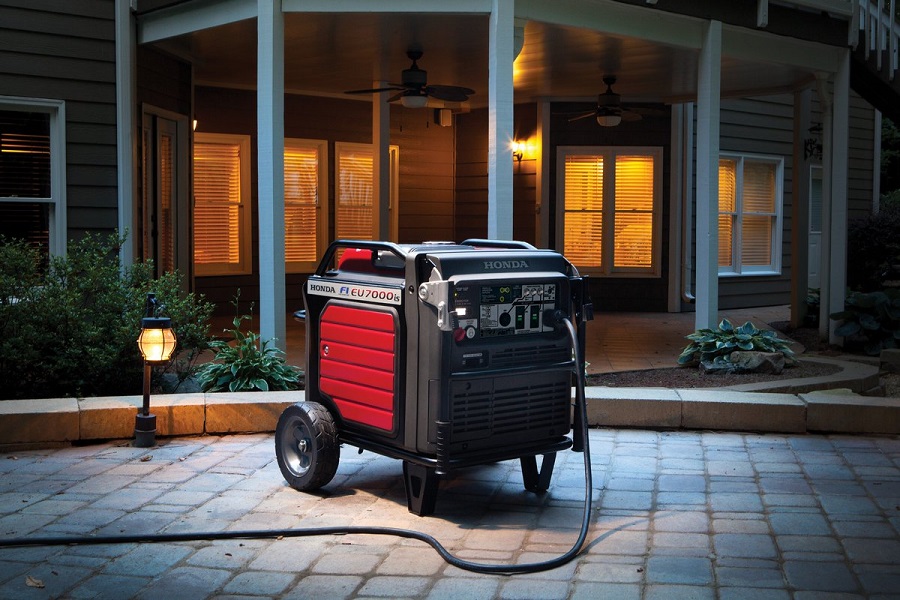
[lasso rel="emergency-preparedness-more-a-manual-on-food-storage-and-survival-2nd-edition-revised-and-updated" id="35334"]